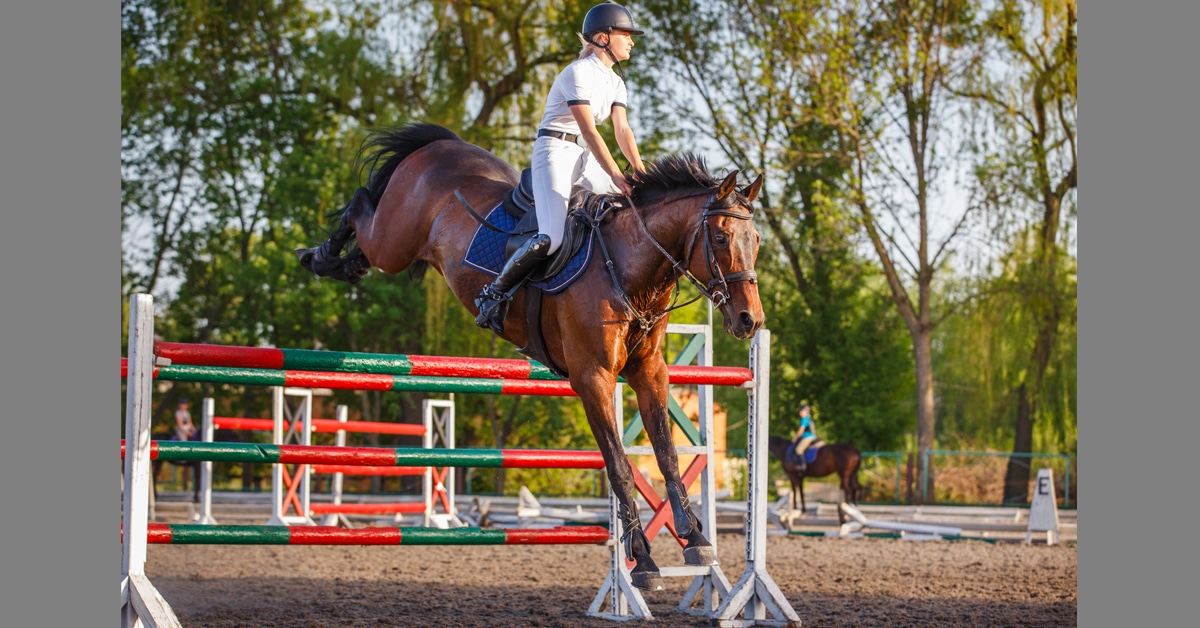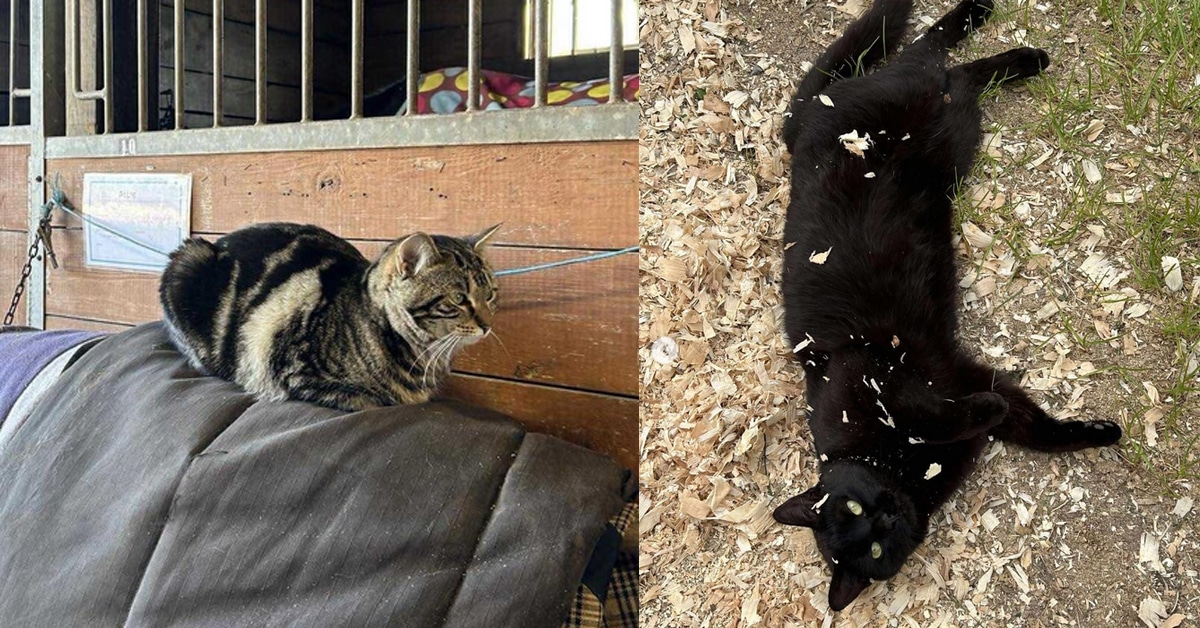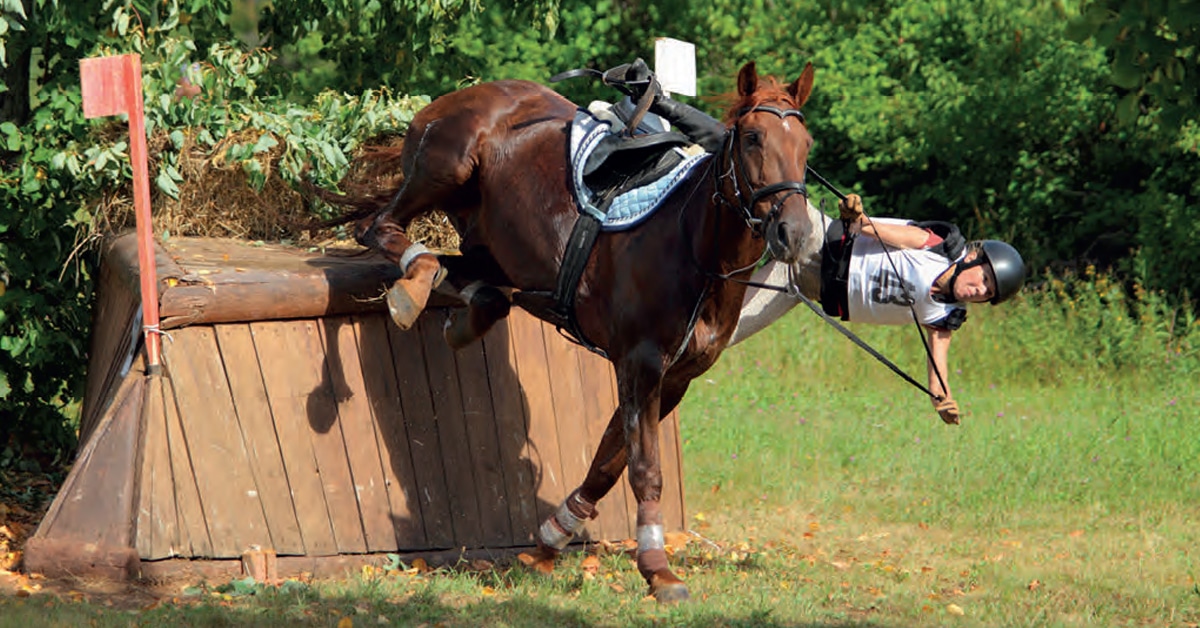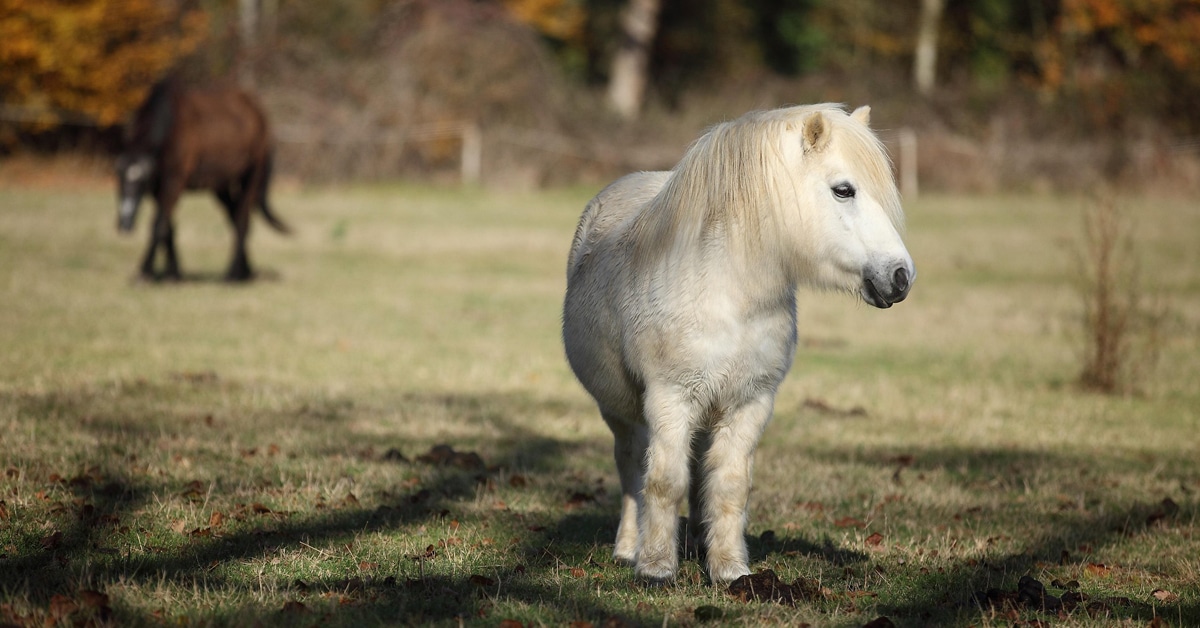Electrolytes are critical for body function. They play important roles in both muscle and nerve function, as well as regulate fluid balance within the body. They are minerals that carry an electric charge when dissociated (split) in water, becoming ions.
Ensuring that electrolytes are adequately supplied is important to promote hydration and well-being. When a horse is exercised intensely in hot weather, they can produce up to 15 litres (four gallons) of sweat per hour! With that fluid loss, they are also losing a significant number of electrolytes.
Equine Sweat and Dehydration
Horse sweat carries a high concentration of electrolytes. If you picture a horse that has profusely sweated during exercise, you may notice a white residue that remains on their coat. This residue is electrolytes that were lost through sweat and the more a horse sweats, the more electrolytes they require.
Differing from humans, equine sweat is hypertonic, which means that there is a greater concentration of electrolytes in it than in the circulating body fluids. When humans sweat it is hypotonic, meaning that the concentration of electrolytes in the sweat is less than in the circulating body fluids.
When fluid balance is inadequate in the horse and the animal is dehydrated, there are a variety of health consequences. The horse will be fatigued, weak, and may present with serious health issues such as colic and tying up. When electrolytes are imbalanced in the body, there will also be negative effects on muscle and nerve function. Symptoms of this may include a shortened stride, tripping or stumbling, and muscle soreness.
The main electrolytes that are lost in equine sweat are sodium, chloride, and potassium. Calcium and magnesium are also lost, but in lesser quantities. Supporting our horses with adequate electrolyte supplementation can make a significant difference in their health and performance, especially when horses are working multiple days in a row and sweating profusely.
Salt
Salt (NaCl) is sodium and chloride, which are electrolytes. In equine diets, it is unfortunately all too common that rations are deficient in sodium, as it is low in both hay and pasture. Even horses that are not in work should be receiving supplemental salt. For a mature horse that weighs 500 kg, they should be receiving two tablespoons of loose salt daily in their feed.
Often, horse owners may rely on a salt lick for their horse’s intake; however, it is extremely difficult for a horse to consume enough salt from a block to meet their daily requirements. Therefore, as a baseline, ensure loose salt is being added to your horse’s daily ration, and when their workload increases or they are sweating, turn to electrolytes.
Please note that electrolytes do not replace the salt in the horse’s diet; they should simply be added when the horse is losing additional electrolytes through sweat.
Performance Electrolyte Supplementation
Research has clearly demonstrated that with proper electrolyte supplementation the onset of fatigue can be delayed, and the horse’s ability to recover from the work can be improved. It is not enough to simply provide salt and water to a horse that has lost significant electrolytes through sweat. These animals should be provided with both water and electrolytes to rehydrate. (This does not apply for severely dehydrated animals as they likely need intravenous fluids and a veterinarian should be consulted.)
The goal of electrolyte supplementation is to replace what was lost in sweat. Therefore, when choosing a product, it should be specifically formulated to match equine sweat. Sourcing a product that is formulated for horses with sodium, potassium and chloride in the greatest quantities is recommended.
The chemical equation of equine sweat is Na + K + Ca + Mg = Cl + P + S, and although products will not list an exact equation, you can look for the amount of sodium and potassium being close to equalling the amount of chloride.
The amount of electrolyte that should be supplemented will be directly proportional to the amount the horse is sweating. Therefore, for baseline requirements, salt supplementation is adequate. However, when a horse is sweating, an electrolyte supplement should be added.

You may have to introduce electrolytes in water gradually if your horse objects to the taste. (Kirill Gorlov – stock.adobe.com)
Administering Electrolytes
If you have been to a horse show in the summer months, you may have observed a variety of administration methods for electrolyte products. One key issue is that electrolytes are hydroscopic. This means that if the horse does not consume enough water, the product can actually dehydrate them further. The gold standard is to provide the electrolyte as a solution (mix the powder with water). This method of administration is preferred, as the horse will be consuming adequate amounts of water with the electrolyte.
It is popular to provide electrolytes as a top dressing on feed, and in many cases this is adequate. An example would be horses in light work that are not profusely sweating. For horses that are competing at upper levels it should be provided in water both after transportation if they sweat in the trailer, and after any exercise session in which they are sweating. Performance electrolyte products will provide instructions for how many ounces of the product should be provided and in how much water it should be mixed with.
A common roadblock with feeding electrolytes in solution is that the horse may not find the product palatable. With finicky horses it is recommended to start with a more dilute solution and gradually increase the amount of electrolyte. You can also look for one that includes some dextrose to improve palatability.
Remember that it is not recommended to try new management strategies when travelling. Instead, start offering your horse electrolyte solutions after training at home so that they are used to consuming it when it is offered off-property at a show.
To recap:
- even horses that are not in work should have loose salt fed daily.
- horses in situations where they are sweating should be administered performance electrolytes
- the amount of electrolyte required is directly proportional to the amount lost in sweat
- in most cases, feeding electrolyte as a top dress is adequate, but
- the gold standard is to provide it mixed with water as a solution.
If you have any questions about your horse’s individual electrolyte needs, consult a qualified equine nutritionist.
The Latest











